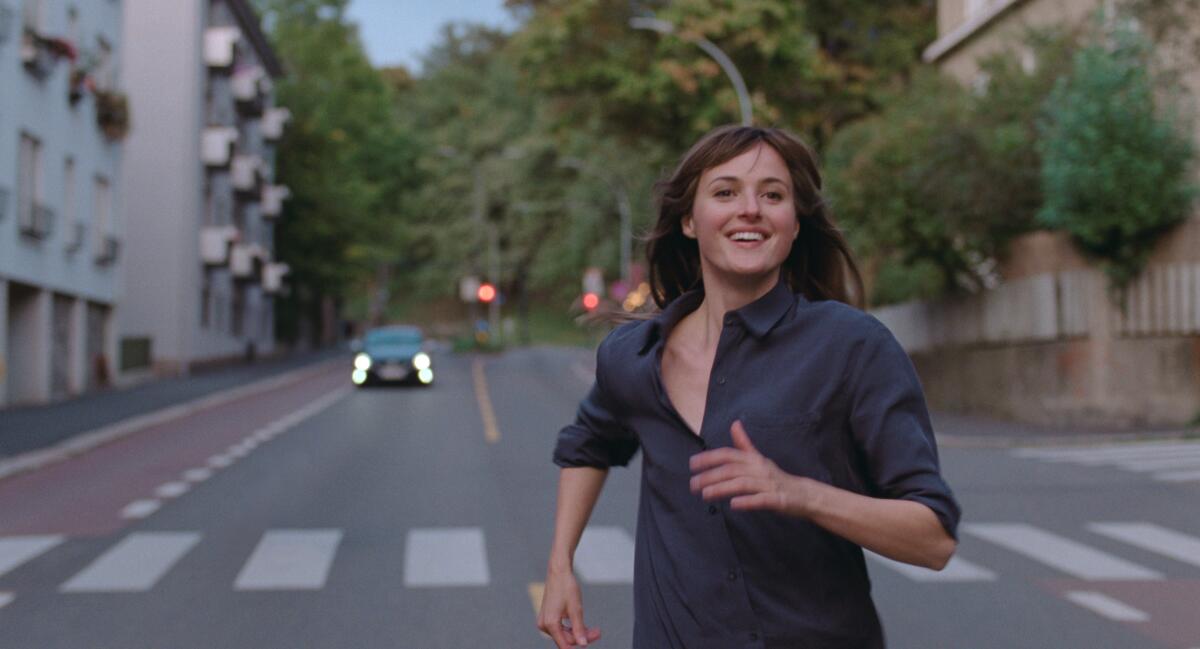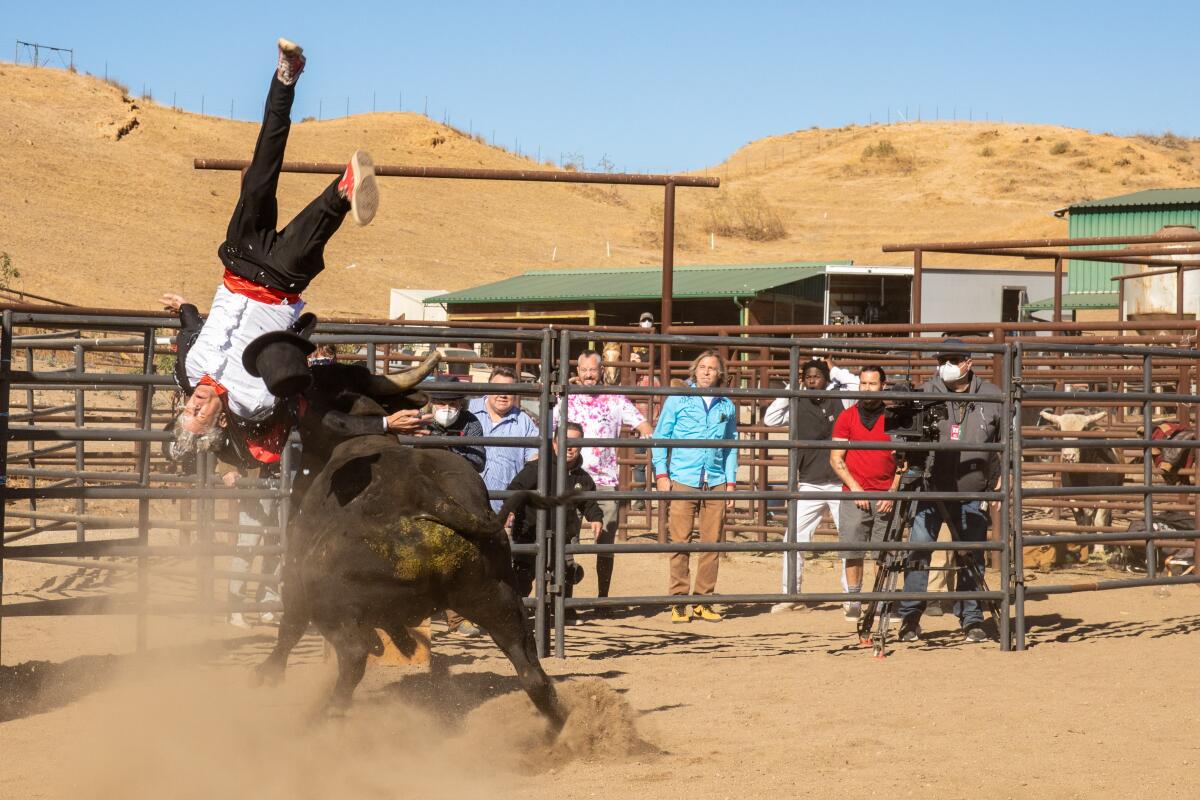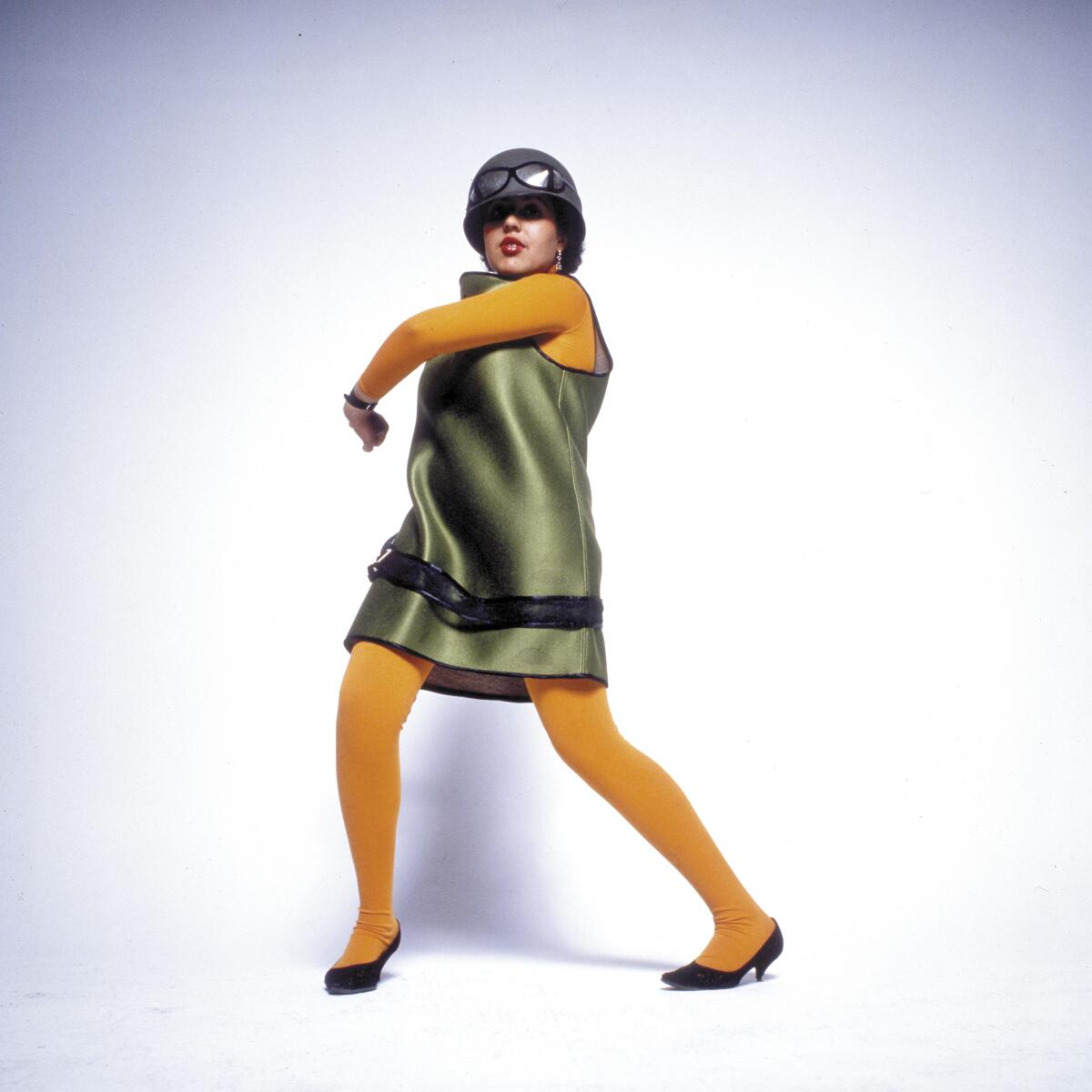Why ‘The Worst Person in the World’ is among the best films of the year
- Share via
Hello! I’m Mark Olsen. Welcome to another edition of your regular field guide to a world of Only Good Movies.
Only good movies
Get the Indie Focus newsletter, Mark Olsen's weekly guide to the world of cinema.
You may occasionally receive promotional content from the Los Angeles Times.
The conversation about the future of moviegoing in the era of streaming has been ongoing for a while, but one thing often overlooked is what theatrical experience audiences can expect in a post-pandemic landscape. Mary McNamara wrote about the future of Laemmle’s popular Playhouse 7 theater in Pasadena, which recently acquired a new owner, throwing its future in doubt.
“As art house theaters teeter on the verge of extinction, the Playhouse 7, one of Laemmle’s most popular, is also beloved for what it symbolizes,” she wrote. “As a place to see ‘foreign’ films and indie darlings in velvet seats just lumpy enough to evoke a different era of moviegoing pleasure, it is a reminder that even nonspectacle films are worth seeing on the big screen, even if you can’t recline while seeing them. … The proposed closure of any small theater inevitably sparks declarations of local love and essays on the importance of art-house cinema, but none of that means much if there are no receipts. As in ticket sales receipts.”
Awards season continues apace, with the BAFTA nominations coming out earlier this week. Michael Ordoña took a look at the surprises in the listing, including the lack of nominations for “Spencer” as well as seeming snubs of Olivia Colman in “The Lost Daughter” and Andrew Garfield in “Tick, Tick … Boom!”
The Oscar nominations happen next week, and Glenn Whipp has his predictions. Look for Ryûsuke Hamaguchi to pop up in best director and screenplay for “Drive My Car” and Penélope Cruz in best actress for “Parallel Mothers” (and another possible blanking of Kristen Stewart).
Speaking of “Spencer,” for The Envelope podcast this week I spoke to the film’s director, Pablo Larraín. He talked about what Stewart brought to the film’s very specific depiction of Princess Diana, saying, “There’s an element of magnetism and some strange idea of mystery that she carries. And I felt that the only way to properly portray this version of Diana is through all the things that you don’t give away. So I think Kristen is someone that, in the shoes of this character, could say what she’s feeling, could express what she wanted, could verbally and physically mention many things that she was going through, but at the end, you don’t really know what she’s feeling. She can create that idea of trying to capture something that you would never be able to capture.”
Enjoying this newsletter? Consider subscribing to the Los Angeles Times
Your support helps us deliver the news that matters most. Become a subscriber.
‘The Worst Person in the World’
Among the most acclaimed films of the last year, director-co-writer Joachim Trier’s “The Worst Person in the World” is Norway’s submission for the international feature Oscar; Renate Reinsve won the best actress prize at last year’s Cannes Film Festival. The film tells the story of Julie, a young woman who is finding herself romantically, professionally and emotionally. The film is in theaters.
For The Times, Justin Chang wrote, “Some will assume that Julie, being a male artist’s fictional construct, can’t ultimately exist on any terms but his — a reading that overlooks both the evidence on-screen and the vital, even authorial role that Reinsve plays in her character’s creation. For his part, Trier hardly ignores the gap, gender-based as well as generational, between himself and his protagonist; on the contrary, he acknowledges and even embraces this distance. … Nobody here actually calls Julie the worst person in the world (that insult is reserved for another character entirely), but you can imagine her thinking it about herself as she considers the mistakes she’s made and the people she’s hurt. But over the course of this charming, wistful, ineffably tender movie, you also see her learn to embrace the possibility of good in herself and in every precious, unhurried moment. It’s time well spent.”
I spoke to Trier and Reinsve about the response to the film. As Reinsve said, “It’s like people really need it. Someone actually really digging deep into what it is to live now and love now. This goes really deep into the nuances of what it is to be a human being today. And I feel like people really appreciate the way you made this movie, and it gets so personal to people. It’s hard to see the time that you’re living while you live in it, but I think Joachim and Eskil [Vogt] writing this movie really captured something.”
“And I think that internal space of self-acceptance, all of us can struggle at times to try to find that space,” said Trier. “I think we owed it to Julie to take it serious. The journey in this film is about exploring that self-acceptance.”
For Vulture, Angelica Jade Bastién wrote, “By setting ‘The Worst Person in the World’ at this stage of Julie’s life, Trier sidesteps the arch emotional beats that define stories of very young people in love. He allows his maturing, if not mature, characters to exist in exceedingly gray areas. They aren’t neatly good people with perfect politics who say what they mean and mean what they say. They [f—] up, in sometimes glorious ways, and are accountable. ... Julie especially stumbles. There’s a crystalline quality to Reinsve’s performance, in which every gaze, gesture, and genuflection is doubled in meaning — speaking not just to who she is but who she is angling to be. … ‘The Worst Person in the World’ acts as a forceful reminder that the entanglements between women and the love interests dancing in and out of their lives matter less than the lifelong relationship we must maintain with ourselves.”
For the New York Times, A.O. Scott wrote, “Reinsve’s performance is vivid, inventive and grounded — she entirely deserved the acting award she won in Cannes last year — but to some extent, Julie remains a middle-aged man’s idea of a younger woman. … If ‘The Worst Person in the World’ is about Julie’s indecision, it’s also about Trier’s ambivalence. Some of the suspense in the film comes from wondering what he will do with her, and whether, as much as he loves her, he can figure out how to set her free.”
For the AP, Lindsey Bahr wrote, “Perhaps one of the loveliest things about this film, which could have been rather niche, is just how universally loved it has become — everyone, it seems, can see themselves in ‘The Worst Person in the World,’ whether your 20s are a distant memory or not. It’s a reminder of the power of cinema that even a smallish film from Norway without any movie stars or franchise possibilities can still break through the noise. The film itself does have an end, by the way, and a satisfying one at that. But it’s also not a conclusion. Just seemed important to note.”

‘Jackass Forever’
Directed by Jeff Tremaine, “Jackass Forever” is the latest entry in a franchise that now spans more than 20 years in its celebration of friendship and reckless exuberance. Reuniting Johnny Knoxville with a team of old pals and new members, the film is another assortment of I-can’t-believe-I-just-saw-that stunts. The movie is in theaters.
For The Times, Katie Walsh wrote, “On the surface, ‘Jackass’ embodies a ‘boys will be boys’ silliness in the skate-park shenanigans, but these bros have always had a subversive side, refusing to shy away from the naked (literally) homoeroticism of their content. The violence enables an easy physical intimacy, the fear and pain a demonstration of vulnerability. In a world of hard-bodied superheroes, there’s something so refreshing about a man attempting a very stupid feat and expressing just how much it hurts. … ‘Jackass Forever’ transcends the body horror to achieve a kind of nirvana: The crew invite themselves to laugh so they don’t cry, and ask the audience to do the same. It’s a reminder that pain is temporary but friendship is forever.”
I spoke to Knoxville, who addressed the franchise’s longevity when he said, “We didn’t even think it was going to be on television. Our pilot got shut down, so we didn’t even think it was going to make it to the television screen. And then we thought no one’s going to watch it. And then when we had a movie we’re like, ‘Well, no one’s going to come.’ So we’re constantly surprised but very appreciative of what we’ve been able to do. And that’s because of the fans.”
For the New York Times, Amy Nicholson wrote, “‘Jackass’ remains the most shocking theatrical experience since the mythic mid-1890s screening of the Lumière brothers’ ‘Arrival of a Train at La Ciotat Station.’ As a test of resolve, it has no rivals. … Two things continue to hoist ‘Jackass’ above its legion of imitators, many of whom are now found on TikTok. First, the razor-sharp slow-motion cinematography, which immortalizes writhing men in wet underpants with the devotion of Michelangelo sculpting ‘The Pietà.’ Second — and more important — is the crew’s friendship, which is evident as they egg on the wounded and apply a healing salve of applause in nearly every scene. Bones get brittle. The heart muscle remains strong.”
For Rolling Stone, David Fear wrote, “Maturity is a loaded term when you’re talking about this franchise, however, which brings us back to the passage-of-time aspect. Getting gored and flipped by a raging bull when you’re a twentysomething skatepunk making viral videos and trying to crack up your buddies — and yes, releasing that don’t-try-this-at-home footage under the banner of a major media corporation and becoming a celebrity millionaire in the process — is comedy. Doing that same thing when you’re a middle-aged guy in his 50s with a family? Now you’re potentially courting tragedy. … So seeing a gray-haired Knoxville walk into that bullring, as well as the O.G. guys suffering the slings and arrows of outrageous testicular damage long past an expiration date, introduces a whole other level of concern into the proceedings.”

‘Poly Styrene: I am a Cliché’
The documentary “Poly Styrene: I Am a Cliché” is a portrait of musician Poly Styrene, born Marianne Elliott-Said and best known as the dynamic leader of the late-’70s English punk band X-Ray Spex. The film is an especially intimate and unvarnished look at her difficult life, as co-directed by Styrene’s daughter, Celeste Bell, along with Paul Sng, with Ruth Negga reading from Styrene’s diaries, interviews, poems and lyrics. A biracial woman who was part of a scene that could be overwhelmingly white and male, Styrene’s influence can be traced forward to groups such as Bikini Kill and the Linda Lindas. The movie is in limited release and on video on demand.
For The Times, Evelyn McDonnell spoke to Bell and others about the film and Styrene’s influence. As musician Stephanie Phillips said, “The documentary gives fans an insight into the difficulties Poly faced as a sensitive artist existing in an industry that was unable to fully care for her. To see her in the context of her early upbringing, her life after X-Ray Spex and through her daughter’s eyes gives us a fully rounded vision of Poly.”
For the New York Times, Jenn Pelly wrote about the film as well, talking to, among others, Kathleen Hanna and Neneh Cherry. Bell said, “My mum didn’t have an easy life. She had a lot of barriers to break through as a mixed-race woman, but she did, and she did it on her own terms. She took the DIY ethic and really lived it.”
For the Guardian, Peter Bradshaw wrote, “Elliott-Said’s story is another confirmation of how liberating punk rock was. Who else in late ’70s Britain would give the time of day to this hugely talented working-class woman of mixed race? Publishing? Media? Television? Theatre? Of course not — it could only be punk, which she helped to define and energise. There was something authentically heroic about Poly Styrene.”

Only good movies
Get the Indie Focus newsletter, Mark Olsen's weekly guide to the world of cinema.
You may occasionally receive promotional content from the Los Angeles Times.




